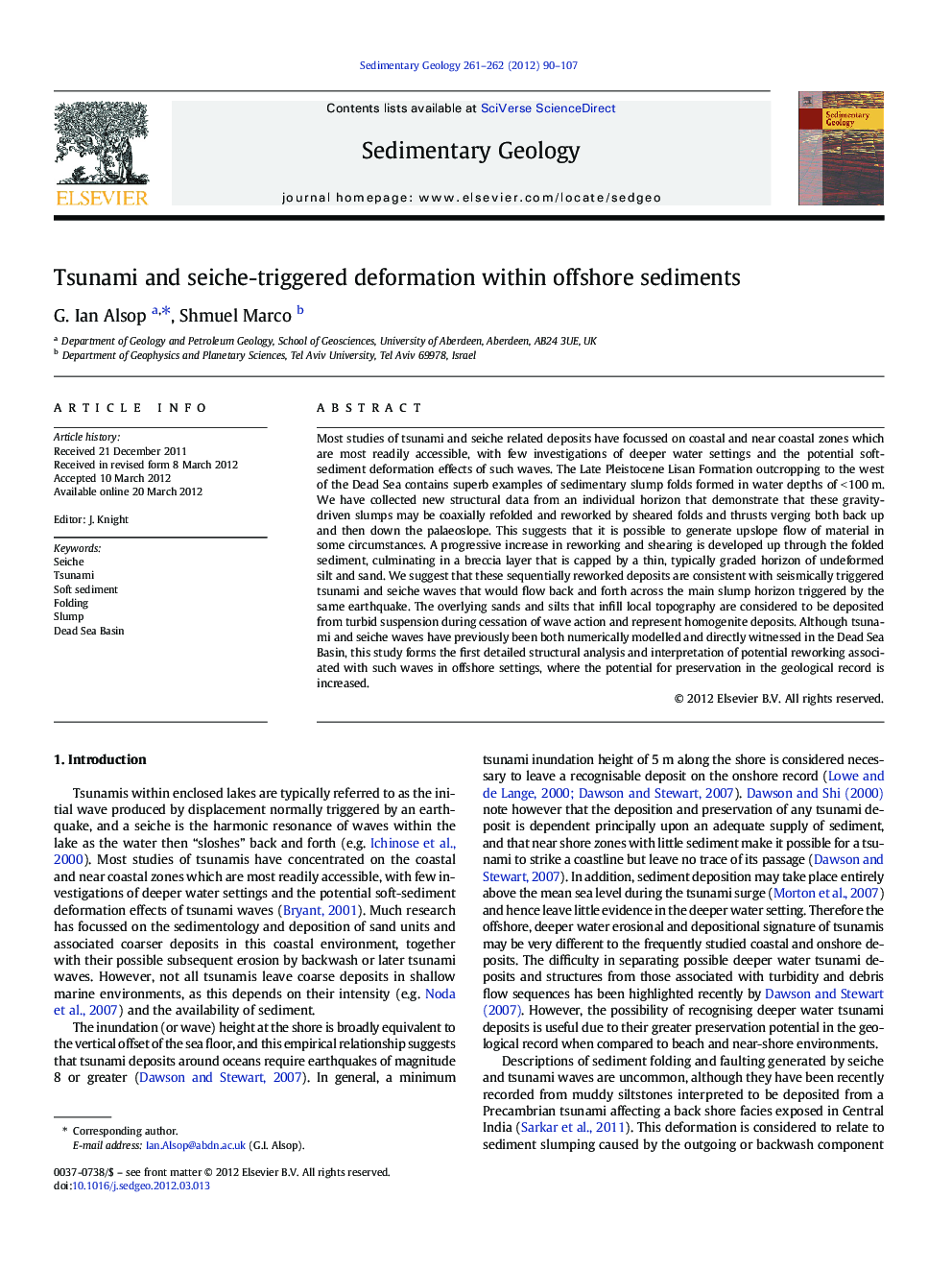| Article ID | Journal | Published Year | Pages | File Type |
|---|---|---|---|---|
| 4689823 | Sedimentary Geology | 2012 | 18 Pages |
Most studies of tsunami and seiche related deposits have focussed on coastal and near coastal zones which are most readily accessible, with few investigations of deeper water settings and the potential soft-sediment deformation effects of such waves. The Late Pleistocene Lisan Formation outcropping to the west of the Dead Sea contains superb examples of sedimentary slump folds formed in water depths of < 100 m. We have collected new structural data from an individual horizon that demonstrate that these gravity-driven slumps may be coaxially refolded and reworked by sheared folds and thrusts verging both back up and then down the palaeoslope. This suggests that it is possible to generate upslope flow of material in some circumstances. A progressive increase in reworking and shearing is developed up through the folded sediment, culminating in a breccia layer that is capped by a thin, typically graded horizon of undeformed silt and sand. We suggest that these sequentially reworked deposits are consistent with seismically triggered tsunami and seiche waves that would flow back and forth across the main slump horizon triggered by the same earthquake. The overlying sands and silts that infill local topography are considered to be deposited from turbid suspension during cessation of wave action and represent homogenite deposits. Although tsunami and seiche waves have previously been both numerically modelled and directly witnessed in the Dead Sea Basin, this study forms the first detailed structural analysis and interpretation of potential reworking associated with such waves in offshore settings, where the potential for preservation in the geological record is increased.
Graphical abstractFigure optionsDownload full-size imageDownload high-quality image (888 K)Download as PowerPoint slideHighlights► This paper describes reworked sedimentary slumps in the Dead Sea Basin. ► Reworking is marked by upslope and landward directed flow. ► We suggest that tsunami and seiche waves are responsible for reworking. ► The deformed unit is overlain by a blanketing clastic interpreted as an homogenite. ► First description of sediment folding linked to tsunami in offshore environment.
